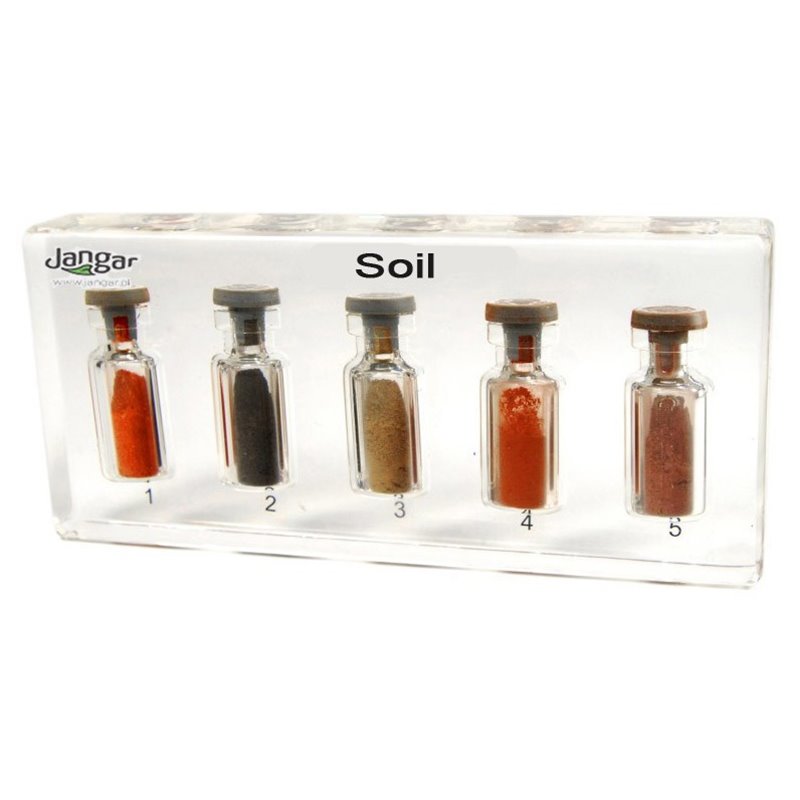Soil Colours - 5 soil samples embedded in acrylic block
Product reference: GEO000083
Tax incl.: zł68.60
Description
Five natural samples of dried soils (in vials) are embedded in a transparent acrylic block. They allow you to see how different the colour of the soils (e.g. red soils) can be. They also explain why colour is one of the most important characteristics when classifying and recognizing soils.
1 - red soil,
2 - black calcium soil (rich in calcium compounds),
3 - sandy soil,
4 - brick red soil,
5 - purple soi.l
Block is wrapped in a bubble pocket and packed in a cardboard box. Dimensions of the teaching aid: 14 x 6.5 x 1.8 cm.
To let you know more...
Red Soil
Red soil gets its color from iron oxide (rust) and is typically found in regions with a warm, temperate, or tropical climate. It’s often well-drained but low in organic matter and nutrients, making it less fertile without amendments.
Black Calcium Soil
Black calcium soil is rich in organic material and calcium carbonate, giving it a dark color. This soil is often fertile and good for agriculture, but its calcium content can sometimes lead to alkalinity, which affects nutrient availability.
Sandy Soil
Sandy soil has a light color and coarse texture due to its high content of sand particles. It drains quickly, making it prone to nutrient leaching and low water retention. While it warms up quickly in spring, it can be less fertile without organic amendments.
Brick Red Soil
Brick red soil is typically found in regions with high iron oxide content. It is similar to red soil but may have a denser and clay-rich structure. This soil type is common in tropical regions and often requires proper management to improve its fertility.
Purple Soil
Purple soil contains minerals like manganese and iron that impart its unique color. It is primarily found in subtropical and tropical regions and can be moderately fertile, depending on its composition and organic content.
Soil colour is an important indicator of its properties and composition of the soil. It is influenced by minerals, organic matter, moisture, and drainage conditions. For example:
- dark brown or black soil often has high organic matter content, making it fertile;
- red or yellow soil indicates the presence of iron oxides, usually found in well-drained soils;
- gray or blue soil suggests poor drainage and low oxygen levels;
- white or pale soil can indicate a high content of silica, calcium carbonate, or leached, infertile soil.
The colours can also help scientists and farmers understand soil health and suitability for agriculture.






































































































































































































































































































































